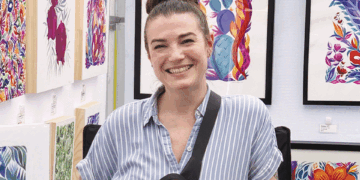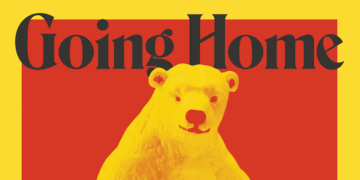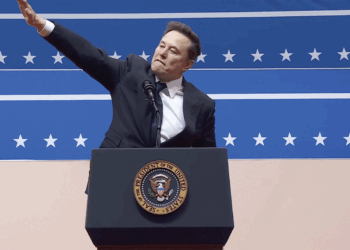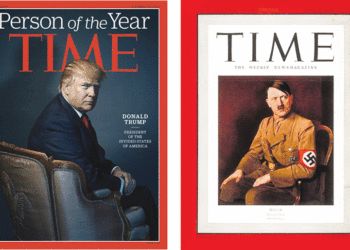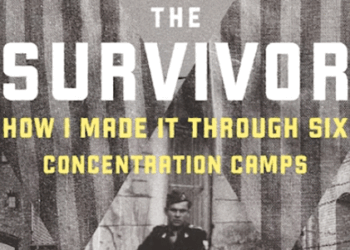Jewish World readers are a group that skews older, as they say. So, I’m assuming that many readers have received one or two doses of the COVID-19 vaccine. I got my first shot on March 1, after patiently waiting for an email or text message from the Minnesota Department of Health.
In late February, my brother, Murray, who lives in Palm Springs during the winter, sent me an email about a “COVID-19 vaccination event” in South Minneapolis. I called the Allina Health clinic on East Lake Street to make an appointment; however, the two-day event was 100 percent booked.
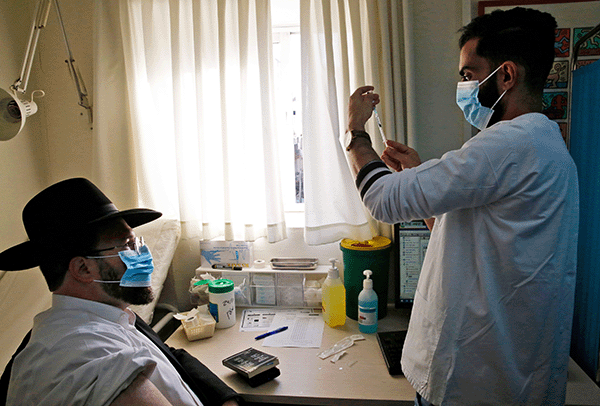
Then, shortly after my call to Allina, a brief email from Hennepin Healthcare directed me to the MyChart website. I logged in and found that appointments were available at the Whittier Viral Screening Clinic. There were 20 or so people in the clinic’s spacious waiting room early Monday morning; after a short wait, my name was called and I received a painless first COVID-19 vaccination. I’m 70 years old and eligible for a dose.
It seems that things are looking up, as far as getting beyond the pandemic that has taken more than a half-million lives in this country and sickened thousands more. A one-shot vaccine developed by Johnson & Johnson has been approved by FDA. It seemed for a time that Americans were too stupid to comply with simple precautions — wear a mask, keep your distance, wash your hands — and we would never see the end of this highly infectious disease. Our compatriots gathered in super-spreader events, from seaside beaches to the Sturgis Motorcycle Rally to, this past Sunday, the Conservative Political Action Conference (CPAC) in Orlando, Fla.
The Biden administration seems to be pro-science and focused on quickly getting vaccines into the arms of the citizenry. The “previous guy,” as Pres. Joe Biden refers to No. 45, was intent on minimizing the danger from the novel coronavirus, tagging it with a derogatory name (“China virus,” etc.) and mocking those who wore face masks and generally acted in a decent manner, trying to minimize the spread of SARS-CoV-2.
On Feb. 14, 2020, for example, Trump addressed the National Border Patrol Council and declared, “There’s a theory that, in April, when it gets warm — historically, that has been able to kill the virus. So we don’t know yet; we’re not sure yet.” Of course, infections and deaths surged last summer and into the fall and winter.
And on March 7, 2020, Trump was at Mar-a-Lago and, asked whether he was concerned that the virus was getting closer to the White House and Washington, he responded: “No, I’m not concerned at all. No, I’m not. No, we’ve done a great job.” He did a great job of claiming credit for things that he had no part in. He wasn’t good at presidenting.
Anyway, the excitement I felt at being vaccinated was muted by an awareness of the lives that have been lost and blighted over the past year. The death toll from the COVID-19 pandemic has fallen disproportionately on Blacks, American Indians, Latinos and other people of color. You might recall that there were mass COVID outbreaks last year at meat processing plants in the Midwest, among Latino, East African and other immigrant workers.
In a March 2 Star Tribune opinion article, three public health experts noted that “the burden of COVID-19, like other challenges in our state’s past and present, is not shared equally. Minnesotans who are Black, Indigenous and people of color (BIPOC), and those living in rural communities, are substantially more likely to experience the devastation of COVID-19.”
The article’s authors, Katy Backes Kozhimannil, Mariana Tuttle and Carrie Henning-Smith, continued: “The pandemic’s worst consequences lie at the intersection of geography and race among rural BIPOC Minnesotans. We requested data from the Minnesota Department of Health (MDH) and used it alongside census data to calculate COVID-19 case and death rates for Asian, Black, Indigenous, Latinx and white Minnesotans in rural and urban counties.
“County-level COVID-19 case rates are higher for all BIPOC Minnesotans, compared with white Minnesotans. And case and death rates are higher for rural residents in every racial or ethnic group, compared with their urban counterparts. For Indigenous and Asian Minnesotans, death rates were more than twice as high in rural counties than in urban.” (You can read the entire article here: bit.ly/covid-minnesota.)
In addition to writing for the AJW, I write a monthly column for The Circle, the Native newspaper in Minneapolis. For some reason, they’ve let this white man write about politics affecting Indian Country for the past 40 years. Over the past year, I’ve written about the high number of deaths from COVID-19 on the Navajo Nation; and I recently passed on reports about a surge of infections on Wisconsin tribal lands.
“American Indians in Wisconsin are now dying from COVID-19 at a higher rate per capita than any other ethnic group in the state, according to the Department of Health Services,” as per a Feb. 23 report in the Green Bay Press-Gazette. “That’s a change from the start of the pandemic and throughout the summer, when cases and deaths from COVID-19 among American Indians had been relatively low.”
The Press-Gazette article continues: “Tribal health officials had attributed the early success to stringent health mandates on the reservations, such as social distancing and wearing masks, and frequent safety communications to tribal members. Then in the fall, cases and death rates started to climb drastically among American Indians, with the largest spike in deaths in November. Oneida Nation medical officials in northeastern Wisconsin were seeing as many as 40 COVID-19 cases a day in the fall, said Debra Danforth, director of the tribal health department.”
Danforth told the newspaper: “It was frightening.”
The newspaper paper noted that between March 11 and Sept. 11, there were 10 deaths caused by COVID-19 among American Indians in Wisconsin. “By Feb. 14, there were 85, and those who died included well-respected elders, some of whom were known for their work to preserve tribal history and traditions.” The article thoughtfully provided profiles of some of the elders who succumbed to COVID complications. “As Indian people we value our elders so much because they carry that knowledge with them,” Jennifer Webster, Oneida Nation council member, told the newspaper.
Vis-à-vis Pesach, we are trying to leave the pandemic behind, as our ancestors fled from cruel bondage in Egypt. Our situation will be underscored by a second year of seders over Zoom. Perhaps, your seder will provide an opportunity to talk about how a new world, a more humane society, could be created post-pandemic.
After all the sacrifices that have been made, we shouldn’t go back to the previous status quo that created the conditions for the spread of the novel coronavirus and abided the pandemic of racial injustice — and the other inequitable divides in our country. In the early days of the Minnesota governor’s emergency orders, Powderhorn Park, two blocks from our house, suddenly filled with several hundred tents for our unhoused neighbors. As I’ve noted in my columns for The Circle, a disproportionate number of the homeless in Minneapolis are Native people — many of them resided at the Wall of Homeless Natives, off Hiawatha Avenue, two years ago. Our elected officials elect to kick the can down the road, as far as trying to solve homelessness and other longstanding social problems.
Meanwhile, the murder trial of former Minneapolis cop Derek Chauvin is set to begin on March 8, and the authorities in Minneapolis are erecting concrete barricades, chain-link fences and razor wire around public buildings. Chauvin choked the life out of George Floyd, and if he’s acquitted, we could see a reprise of the riots that destroyed a large swath of South Minneapolis. There really is a lot to talk about as we celebrate the Season of Our Freedom.
The editors and staff of the American Jewish World wish all of our readers a happy and meaningful Passover.
Mordecai Specktor / editor [at] ajwnews [dot] com

